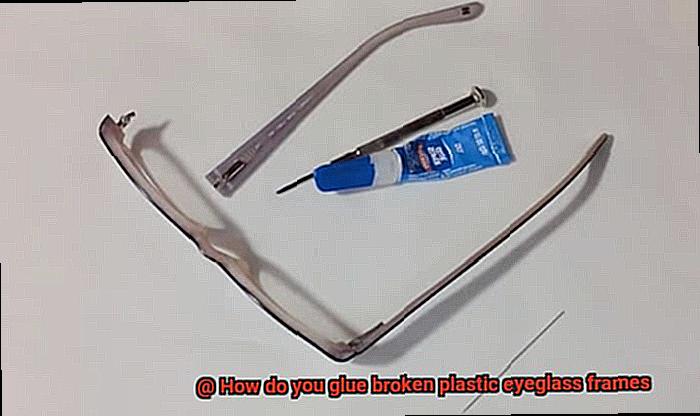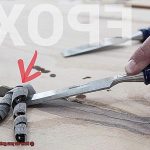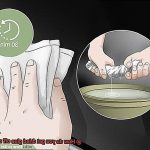Do you feel frustrated every time your plastic eyeglass frames break? Well, you’re not alone. Broken glasses can be a real pain in the neck, but don’t worry, we’ve got your back. The solution is simple – glue.
With the right type of glue, you can easily reattach your broken eyeglasses without having to spend a fortune on a new pair. But which glue should you use? How do you fix it correctly? Are there different types of plastic frames that require specific types of glue? Our comprehensive guide will answer all these questions and more.
We’ll dive into everything from understanding the different types of glue to following recommended steps for repair. We’ll also highlight common mistakes to avoid and share some helpful tips to keep in mind during the process. By the end of this article, you’ll be able to repair your plastic eyeglass frames like a pro. So let’s get started and say goodbye to those pesky broken glasses frames for good.
What is Cyanoacrylate Glue (Superglue)?
Contents
- 1 What is Cyanoacrylate Glue (Superglue)?
- 2 How to Prepare the Broken Frame for Gluing?
- 3 Applying Superglue to the Frame
- 4 Other Adhesives That Can Be Used on Plastic Frames
- 5 When to Use a Plastic Welding Kit?
- 6 Tips for Gluing Broken Frames
- 7 How to Test If the Glued Frame Is Securely Fixed?
- 8 Potential Risks of Using Superglue on Eyeglass Frames
- 9 Conclusion
Cyanoacrylate glue, otherwise known as superglue, is a revolutionary adhesive that was discovered in 1942 by Dr. Harry Coover. Dr. Coover was working on creating a clear plastic for gun sights during World War II when he stumbled upon this fast-drying adhesive. Since then, cyanoacrylate glue has become increasingly popular and is commonly used to bond plastics, metals, and other materials.
One of the most effective uses for cyanoacrylate glue is repairing broken plastic eyeglass frames. It’s a relatively quick and easy solution that can save you time and money compared to buying a new pair of glasses. However, it’s important to use the right type of glue and handle the frames with care.
The adhesive works by forming a strong bond when it comes into contact with moisture. This can cause problems when gluing certain materials such as wood or paper, which naturally contain moisture. However, it makes it ideal for bonding plastic eyeglass frames which often don’t have moisture in them.
Cyanoacrylate glue dries quickly, typically within seconds, which makes it perfect for quick repairs like fixing broken eyeglass frames. Additionally, it has a high tensile strength and can withstand a lot of stress. However, it’s important to note that it should be used in a well-ventilated area and with proper safety precautions as it can be harmful if ingested or inhaled.
Before applying the glue to your broken frames, you must clean the edges thoroughly with alcohol or acetone. This will remove any dirt or oil that could prevent the glue from adhering correctly. Once the edges are clean and dry, apply a small amount of superglue to one of the broken pieces and press it firmly against the other piece. Hold the pieces together for at least 30 seconds to allow the glue to set.
It’s essential to note that superglue should be used sparingly as excessive use can cause damage to the frame or lenses. Additionally, it’s not recommended to use superglue on frames that have been previously repaired with epoxy glue as the two types of adhesives can react negatively with each other.
How to Prepare the Broken Frame for Gluing?
When your plastic eyeglass frame breaks, it can be frustrating. But don’t despair. With the right preparation, you can easily glue the broken pieces back together. Here are the steps to follow to prepare your broken eyeglass frame for gluing:
Clean the Broken Area
Start by cleaning the broken area of the frame to remove any dirt, oil, or residue that may interfere with the bonding process. Use a soft cloth and rubbing alcohol to ensure that the surface is clean and dry before proceeding.
Sand the Broken Edges
Using fine-grit sandpaper, lightly sand the broken edges of the frame to create a rough surface that will help the glue adhere better. Be careful not to sand too much or you may damage the frame further.
Align the Broken Pieces
Carefully align the broken pieces of the frame to their original position and hold them in place with gentle pressure. You can use tape or clamps if necessary to secure the frame in place.
Apply the Glue
Choose a plastic glue or epoxy that is specifically designed for plastic materials. Apply a small amount of glue to one of the broken edges of the frame, making sure to cover any gaps between the pieces.
Spread the Glue
Use a toothpick or small brush to spread the glue evenly along the edge of the frame. Avoid applying too much glue, as it may seep out and create a messy repair.
Hold in Place
Once you have applied the glue, carefully press the broken pieces of the frame together and hold them in place for several minutes until the glue sets. Use clamps or rubber bands to keep everything secure while it dries.
Applying Superglue to the Frame
Don’t worry, applying superglue can be a quick and easy solution to fix those pesky cracks. However, it’s important to follow some simple steps to ensure that the repair is done correctly.
Start off by ensuring that the area you will be applying the superglue to is clean and dry. Any dirt, dust or moisture can affect the bond between the glue and the plastic. So grab a clean cloth or tissue and wipe the area clean.
Next, apply a small amount of superglue to one of the broken pieces. It’s important not to apply too much glue initially, as it can cause a mess. Remember that it’s always better to start with too little glue than too much.
After applying the glue, carefully hold the two broken pieces together for at least 30 seconds. This gives enough time for the glue to set and create a strong bond between the two pieces. If needed, use a clamp or tape to hold the pieces in place while the glue dries.
Once the glue has dried completely, check that the bond is strong enough by gently tugging on both sides of the frame. If there is any movement or separation, apply a bit more glue and repeat the process until you achieve a strong bond.
It’s important to note that while superglue can be an effective solution for repairing broken plastic eyeglass frames, it may not work for all types of plastic. If you’re unsure about how to properly repair your frames, it’s always best to consult with a professional.
To recap, here are some key points to remember when applying superglue to your eyeglass frames:
- Ensure that the area you will be applying the glue to is clean and dry.
- Apply a small amount of glue initially and avoid over-applying.
- Hold the two broken pieces together for at least 30 seconds.
- Check that the bond is strong enough after the glue has dried completely.
- Consult with a professional if you’re unsure about how to properly repair your frames.
Other Adhesives That Can Be Used on Plastic Frames
If you find yourself with a broken plastic frame on your eyeglasses, don’t fret. While super glue and epoxy are commonly used adhesives, there are other options that may work even better for specific types of plastic frames. Let’s explore some of these other adhesives.
First on our list is cyanoacrylate glue, also known as “crazy glue.” This adhesive is similar to super glue but has a thinner consistency, making it easier to apply to small areas. It dries quickly and forms a strong bond, which makes it an excellent choice for repairing plastic frames. Plus, it’s readily available at most hardware stores.
Polyurethane-based adhesives are another option and are often used for bonding plastics. Although they take longer to cure than other adhesives, they form a flexible bond that can withstand stress and impact. This added durability may be worth the wait.
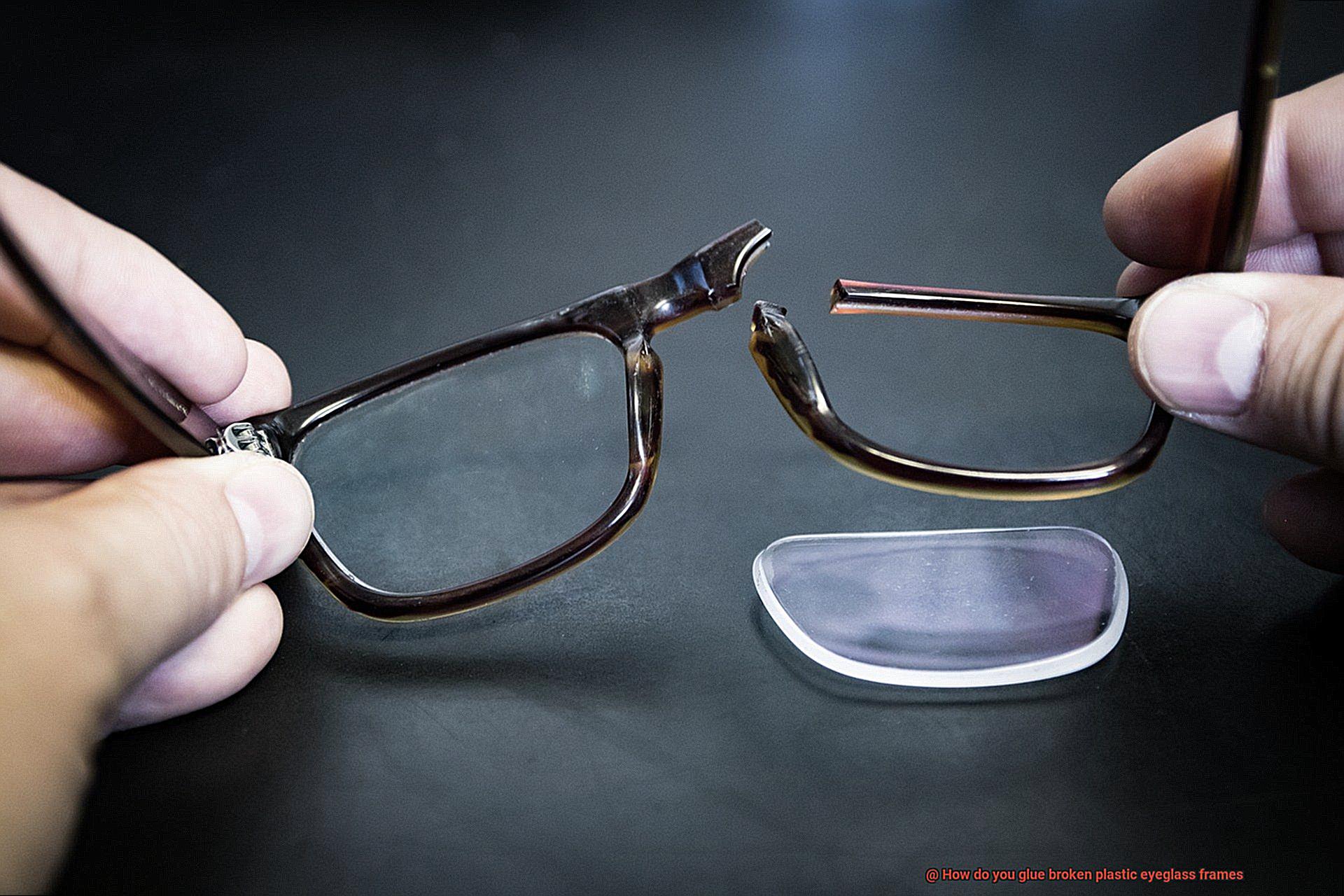
For frames that may undergo bending or twisting, silicone adhesives are ideal. They are flexible and durable, which makes them perfect for handling stress or impact. However, they may not be as strong as other adhesives and may require multiple applications.
It’s crucial to note that not all adhesives will work on every type of plastic frame. Some plastics may require specific types of adhesives, so it’s essential to do research or consult with a professional before attempting to repair the frame.
When to Use a Plastic Welding Kit?
Before you rush to replace them, consider using a plastic welding kit to make a strong and durable repair. However, it’s important to know when a plastic welding kit is the right choice.
First, consider the material of your frames. Plastic welding kits are most effective for frames made from materials such as acetate or nylon, which can be difficult to bond using traditional adhesives. These kits allow for a strong and long-lasting bond to be created between the broken pieces.
Next, think about the location of the break. If it’s in a high-stress area of the frame, such as near the hinges, a plastic welding kit may be necessary to ensure that the repair can withstand regular use. On the other hand, if the break is in a less critical area, a simple adhesive may be sufficient.
It’s also important to weigh the cost and time required for using a plastic welding kit compared to purchasing a new pair of glasses. While a plastic welding kit can save you money in the long run by extending the life of your frames, it may not be worth the investment for minor repairs or if replacement frames are relatively inexpensive.
Ultimately, the decision to use a plastic welding kit will depend on your personal preference and budget. To ensure that you make the best choice for your situation, it’s always wise to consult with an eyewear professional or repair specialist.
Tips for Gluing Broken Frames
Breaking your plastic eyeglass frames can be a frustrating experience, but with the right tips and tricks, you can successfully glue them back together. Here are five sub-sections that will help you achieve a successful repair:
Prepare the broken pieces
Before applying any glue, make sure the broken pieces fit together properly. If necessary, use sandpaper to file or sand down any rough edges to create a smooth surface for the glue to adhere to. It’s also important to clean the broken pieces thoroughly with rubbing alcohol or a similar cleaning solution before applying any glue. This will help the glue adhere better and prevent any dirt or oils from interfering with the bonding process.
Choose the right type of glue
Choosing the right type of glue is crucial for a successful repair. Epoxy and cyanoacrylate (super glue) are both good options for repairing plastic frames as they create a strong bond and can withstand wear and tear.
However, not all types of epoxy or super glue are suitable for all types of plastic, so be sure to check the label and do some research before making a purchase. Additionally, it’s important to choose a clear or transparent formula to avoid any discoloration on the frame.
Apply the glue sparingly and precisely
When applying the glue, less is more. Apply a thin layer of glue evenly to both surfaces and press the pieces together firmly. Hold them in place for at least 30 seconds to allow the glue to set. Avoid using too much glue as this can create a mess and interfere with the fit of the frames. It’s also important to apply pressure to the glued area for several minutes after applying the glue, using a clamp or your fingers to ensure a tight seal.
Let it dry completely
Once you’ve glued the frames back together, give them time to dry completely before wearing them again. This can take anywhere from a few hours to overnight depending on the type of glue used and the extent of the damage. Avoid bending or twisting the frames too much after they’ve been repaired to prevent weakening the bond.
Handle with care
Finally, it’s important to handle the repaired glasses with care. Avoid bending or twisting the frames too much, as this can weaken the bond and cause them to break again. With proper care and attention, a well-repaired pair of plastic eyeglass frames can last for years to come.
How to Test If the Glued Frame Is Securely Fixed?
Fixing a broken eyeglass frame with glue can be a quick and easy solution, but it’s crucial to ensure that the repair is secure before using them again. Here’s how you can test if your glued eyeglass frame is fixed securely:
Visual Inspection
Start by closely examining the glued area for any gaps or cracks. If you detect any, it could indicate that the glue didn’t bond correctly, and the frame may not be secure.
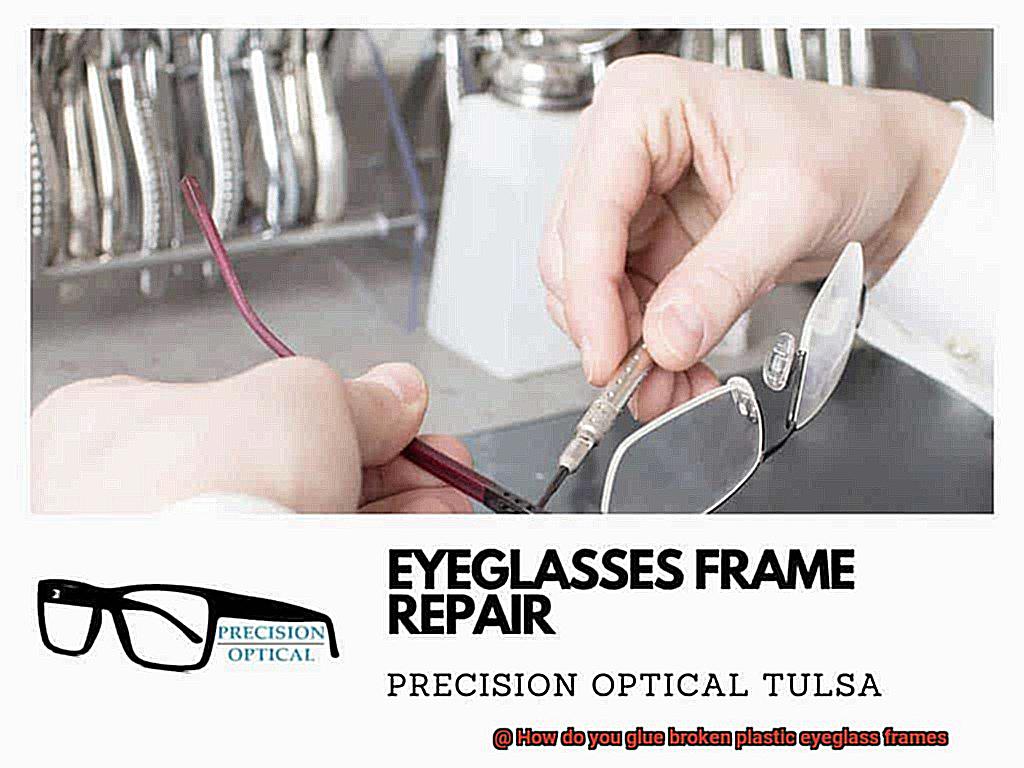
Physical Pressure
Apply light pressure on the repaired area using your fingers. If you feel any movement or hear a clicking sound, it means that the glue did not bond correctly, and the repair may not be strong enough.
Flexibility Test
Gently flex the frame to check if it bends or twists at the glued area. If it does, it means that the glue did not bond correctly and needs to be re-glued.
Wear Test
Wear your glasses for a few hours and observe if they feel comfortable and stable on your face. If you notice any discomfort or movement, it could mean that the glue did not bond correctly.
Performing these tests before using your repaired eyeglasses will ensure that they are safe and secure to use. If you find any issues during the testing process, re-glue the frame or seek professional help to avoid any accidents.
Remember, fixing broken eyeglass frames with glue can be a great solution if done correctly. However, handling them with care and testing them properly before wearing them again is essential to avoid discomfort or even damage to your eyesight.
Potential Risks of Using Superglue on Eyeglass Frames
Your eyeglasses are a critical part of your daily routine, so it can be frustrating when they break. However, before you reach for the superglue to fix them yourself, it’s essential to understand the potential risks involved.
Superglue contains chemicals that can damage the plastic material of the frames and potentially affect the clarity of the lenses. One potential risk is discoloration, where the glue reacts with the plastic of the frames, causing them to turn yellow or become discolored. This can be especially problematic for individuals who have clear or light-colored frames.
Another risk is that the glue could seep into small crevices or cracks in the frames, making them difficult to repair or causing them to become brittle and break more easily in the future. Additionally, if applied improperly, removing superglue from eyeglasses can be a hassle and further damage the frames.
Perhaps even more concerning is that using superglue on eyeglass frames may void any warranties or guarantees that come with your glasses. Many eyeglass manufacturers have specific instructions on how to properly repair broken frames, and using superglue may not be one of them. By doing so, not only could you be damaging your glasses but also lose out on any potential repairs or replacements if something goes wrong.
MIE0vUohUEs” >
Conclusion
As we wrap up this guide on how to glue broken plastic eyeglass frames, it’s clear that a little bit of DIY can go a long way in saving you time and money. But before you grab any old tube of glue, it’s important to choose the right adhesive for your specific frames.
Cyanoacrylate glue, also known as superglue, is a popular choice due to its fast-drying nature and strong bond. However, epoxy or polyurethane-based adhesives may be better suited for certain types of plastic frames. Whichever adhesive you choose, make sure to handle the frames with care and follow recommended steps for repair.
Before applying any glue, take the time to prepare the broken pieces by cleaning them thoroughly and sanding down any rough edges. And when it comes time to apply the glue, remember: less is more. Apply sparingly and precisely while holding the pieces together firmly for at least 30 seconds.
While there are potential risks associated with using superglue on eyeglass frames such as discoloration or damage to the material, these can be avoided by handling them with care and following proper instructions. And in the end, repairing your broken eyeglasses with glue can extend their lifespan and save you money in the long run.
So next time your favorite pair of glasses takes a tumble, don’t fret – grab some glue and get to work.

